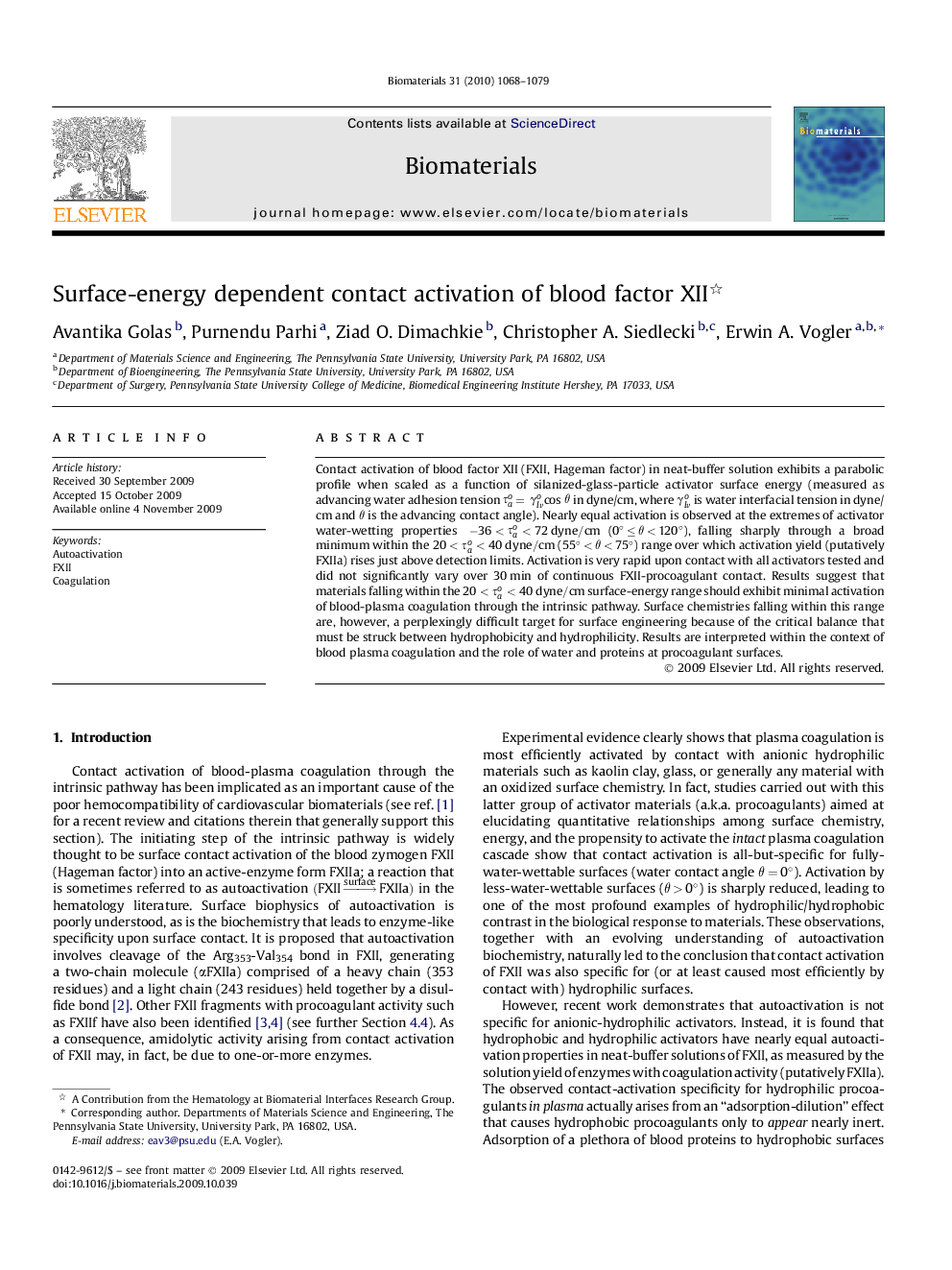| Article ID | Journal | Published Year | Pages | File Type |
|---|---|---|---|---|
| 9809 | Biomaterials | 2010 | 12 Pages |
Contact activation of blood factor XII (FXII, Hageman factor) in neat-buffer solution exhibits a parabolic profile when scaled as a function of silanized-glass-particle activator surface energy (measured as advancing water adhesion tension τao=γlvocosθ in dyne/cm, where γlvo is water interfacial tension in dyne/cm and θ is the advancing contact angle). Nearly equal activation is observed at the extremes of activator water-wetting properties −36<τao<72dyne/cm (0° ≤ θ < 120°), falling sharply through a broad minimum within the 20<τao<40dyne/cm (55° < θ < 75°) range over which activation yield (putatively FXIIa) rises just above detection limits. Activation is very rapid upon contact with all activators tested and did not significantly vary over 30 min of continuous FXII-procoagulant contact. Results suggest that materials falling within the 20<τao<40dyne/cm surface-energy range should exhibit minimal activation of blood-plasma coagulation through the intrinsic pathway. Surface chemistries falling within this range are, however, a perplexingly difficult target for surface engineering because of the critical balance that must be struck between hydrophobicity and hydrophilicity. Results are interpreted within the context of blood plasma coagulation and the role of water and proteins at procoagulant surfaces.
